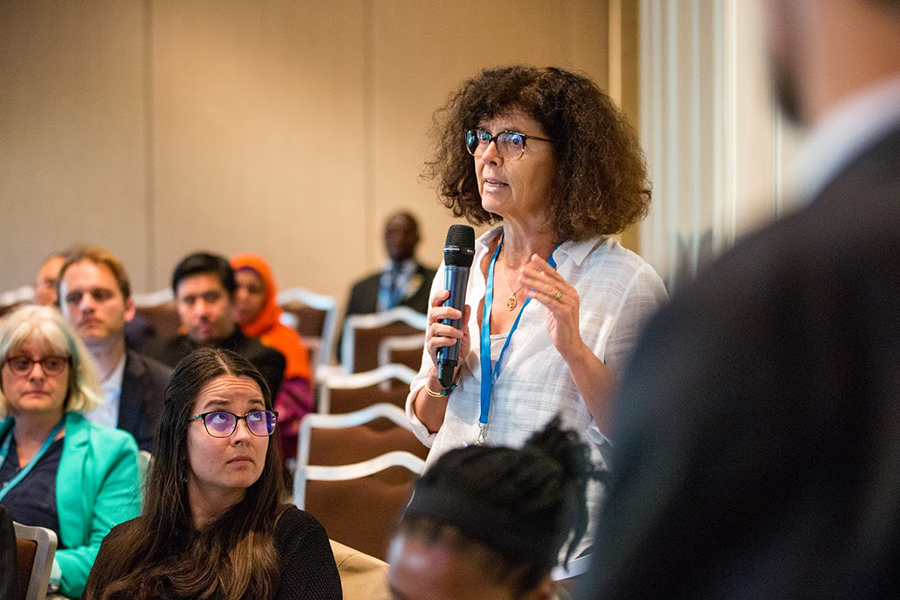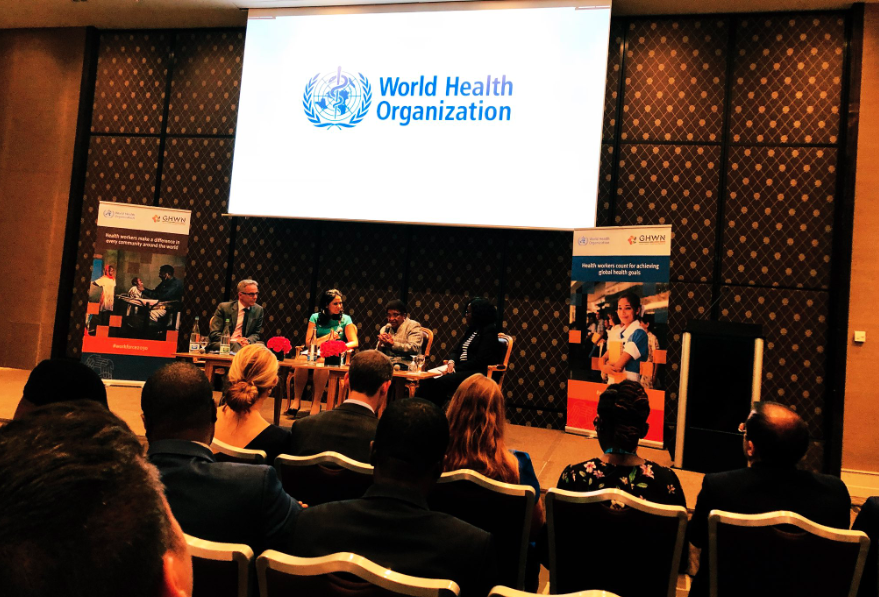DAI Global Health, IntraHealth Return from WHA72 That Spotlighted Primary Healthcare, Community Health Workers
May 28, 2019
Teams from DAI Global Health and its affiliate, IntraHealth International, returned from the 72nd World Health Assembly (WHA72) in Geneva, Switzerland, praising the body’s resolutions to broaden access to primary healthcare and strengthen support for the local health workers—frequently women—who deliver that care.
The World Health Organization issued a press release emphasizing the critical role of primary healthcare—including disease prevention and treatment, rehabilitation, and palliative care—in achieving universal health coverage (UHC) and the need for a holistic approach: “Primary health care means countries must have quality, integrated health systems, empowered individuals and communities, and they must involve a wide range of sectors in addressing [the] social, economic, and environmental determinants of health.”
DAI Global Health President Chris LeGrand, who attended the assembly with IntraHealth CEO Pape Gaye and a significant contingent of DAI and IntraHealth staff, welcomed the WHO’s emphasis on cross-sectoral engagement and the paramount importance of frontline health workers.
“Community health workers have a key role to play in delivering primary health care—they speak local languages and have the trust of local people,” the WHO statement affirmed. “They need to be well trained, effectively supervised, and properly recognized for the work they do, as part of multi-disciplinary teams.”

DAI’s Paula Quigley asks a question at WHA. Photo courtesy of the WHO’s Partnership for Maternal, Newborn and Child Health.
That message was echoed by the Frontline Health Workers Coalition, for which IntraHealth leads the secretariat. As an organization in official relations with the WHO, IntraHealth submitted a total of nine statements to the Assembly—advocating for the investments needed to ensure high-quality health services in underserved communities—and took an active role in the event, leading or participating in five side-events, including the UHC Town Hall on May 21.
With regard to UHC, WHA72 delegates resolved to support preparation for the UN General Assembly high-level meeting on UHC in September.
“It was an inspiring meeting in many ways,” said DAI’s Paula Quigley, a medical doctor with particular expertise in reproductive, maternal, newborn, child, and adolescent health. “Huge progress has been made in the past five years, but there’s still a long way to go with 2.6 million newborn deaths and 2.5 million stillbirths every year.”
Quigley drew attention to two recurring themes at the Assembly: gender equity and digital technology. “There was an excellent session on transforming primary healthcare in the digital age, and it’s clear there is real potential for progress at the community level and for empowerment of people and health workers,” she said.
“Achieving gender equity is not simple,” she said. “But we should remember the five Rs—recruitment, remuneration, respect, reporting, re-enforcement—and, as the International Labour Organization reminded us at the Assembly, we need more men engaged in this effort!”
Notably, Women in Global Health honored IntraHealth’s Jeanne Tessougué at the WHA event as one of seven “Heroines of Health” recognized for their leadership in improving healthcare and advancing gender equality.

Photo courtesy of IntraHealth.
RELATED CONTENT:
New Study Confirms Efficacy of Malaria Treatment Technique
Research from a project in Zambia supported by DAI Global Health along with consortium partners Development Data, Disacare, and Transaid International has confirmed that a pre-referral treatment by community health volunteers can increase survival rates for children with severe malaria.
Read More